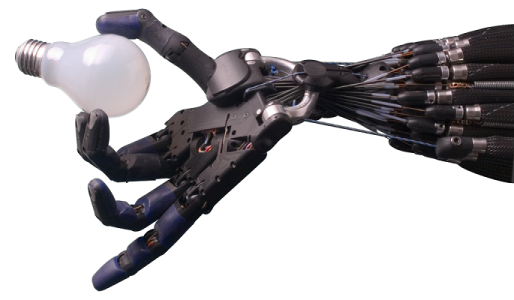Tools of the Future

Like they say, a carpenter is only as good as his tools – and this sentiment stands true in almost every profession we work in. Whether it’s something as simple as a pen and paper or more complex scientific equipment, we rely heavily on tools in both our personal and business lives. So what lies in the not-so-distant future? We take a look.
Technology tools
One type of technology that has been verging on the edge of mainstream usage for the past couple of years is holograms. Web-conferencing tools such as Skype have become a home and office staple – but could we soon be seeing people in three dimensions? The technology is there – it has been used to great effect particularly in music concerts as well as at some airports – so it’s not a question of if they will , but when will holograms become the norm.

The biggest changes in technology tools are predicted to come in the form of communication. It’s hard to imagine life without the internet – and it’s only been properly available for less than 20 years. As communication channels become faster and more powerful, the need for on-site offices will diminish and people will increasingly work from home.
Tools for future disasters
There’s nothing we can do to prevent natural disasters, but we can minimise the damage caused. In recent years, geographical information systems (GIS) have been crucial to pre- and post- disaster management, and this area is certainly one that will continue to advance, grow, and save millions of lives.

Aside from complex GIS software, innovative scientists and inventors are hard-at-work creating real-life tools that can save lives on the ground when disaster strikes. One of the most positive creations has been developed by a Japanese engineering company. After surviving the devastating 2011 earthquake and tsunami in Japan, they have designed survival pods, called ‘Noah’, which work like buoys; up to four people can get inside them and float atop a tsunami for up to two hours, potentially saving their lives.
Hand tools
There will always be a place for the good ol’ hammer and nail (although you never know), but with everything else seemingly going digital or robotically-driven, what is the future for hand tools?

Already, robots are taking over a lot of manual labour, particularly in large factories such as car manufacturing plants. They are more efficient and after the initial costs, are cheaper to run.
But there is still room for something else lying somewhere between robots and humans. This is most evident in the fast developing technology in the world of medical science. To overcome the problem of health practitioner shortages, particularly in remote areas, robotic surgery is becoming the next big thing. A surgeon doesn’t even need to be in the room to perform complex surgeries. The technology is already being used, but there is still huge room for growth, with millions being invested into it.

As Guang-Zhong Yang from the Hamlyn Centre for Robotic Surgery said, ‘You have a human, which is pretty good in terms of decision-making, and learning. You have a robot, which is good at doing precise movements. Why not use a combination of both?’. Precisely. There’s plenty of space for the two of us – both in medicine and elsewhere.
Edberg M (2013-11-18 00:08:27). Tools of the Future. Australian Science. Retrieved: Jul 12, 2025, from http://ozscience.com/technology/tools-of-the-future/
 Follow
Follow